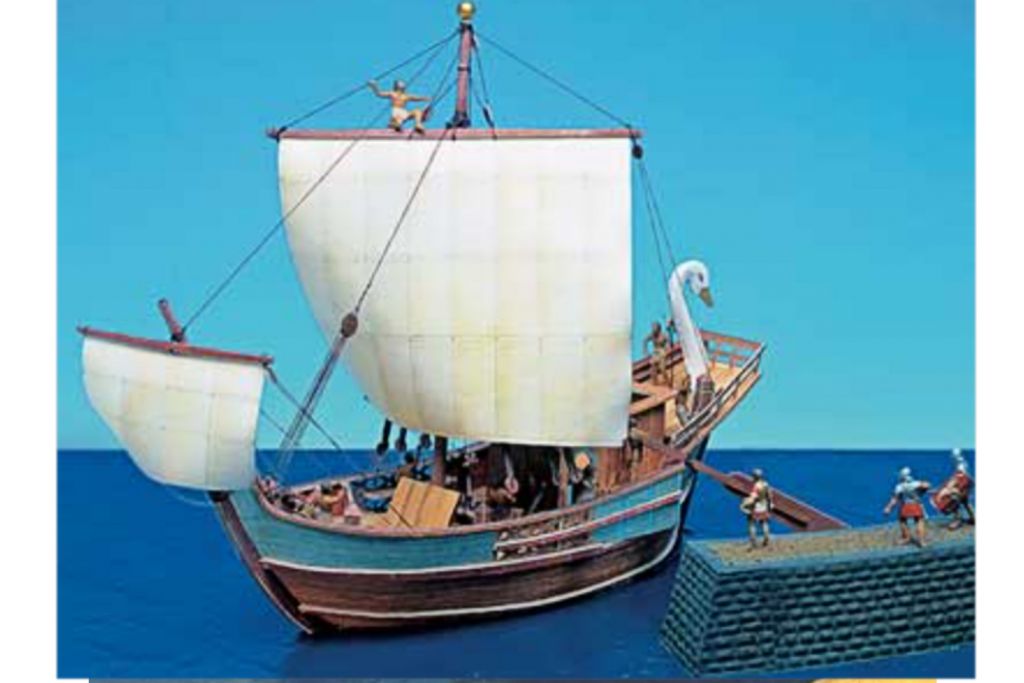Roman Merchant Ship
Cardmodel of a roman merchant ship (Corbita). Scale 1:100, Size 26 x 12 x 22 cm. Difficulty 3 (from 0-3, difficult), consisting of 3 cardboard sheets. Highly detailed model of Corbita, a roman merchant ship / freighter, inspired by ancient depictions and archaeological finds.
Corbita - cardmodel of a roman merchant ship
In the Golden Age of the Roman Empire, Roman ships controlled the Mediterranean Sea. Besides the war fleet - that had been bigger than any other European fleet - many big merchant ships sailed the sea carrying goods for the growing capital Rome. Roman wall paintings, reliefs and mosaics give a good impression about the design of these ships.
Starting from Rome, seaworthy merchant ships with capacities of up to 1,200 tons were sailing in all directions and dropped anchor at the shores of Africa, Asia Minor and many ports in the western part of the Mediterranean Sea. They came back with loads of wheat, edible oil, silk and spices. They brought wine from France and from Greek, they imported chiselled stone sarcophaguses for noble Romans. One of the most important trade routes across the Mediterranean Sea was the one between Ostia, the port of Rome, and Alexandria in Egypt. From there, big quantities of wheat were imported regularly. Such goods as wheat were commonly shipped in earthen amphorae, and an average merchant ship could load as much as 10,000 amphorae. Usually the ships were equipped with two masts, a main mast in the middle and a front mast in the bow. The rectangular linen sails were attached to cross masts. Often, a triangular sail was to be found at the top of the main mast. Examinations of shipwrecks of this time lead to the conclusion that the hull was usually made of the wood of pines, cypresses or cedars. For the ribs oak wood had been used. The tenons and pins were made of marsh oak wood.
The freight was kept below deck. That was also the place where the crew’s accommodation and the galley were located. The deckhouse in the stern of the ship was occupied by the captain and first-class passengers. The deckhouse often sheltered also a small altar niche to offer sacrifice to the tutelaries or to the gods of the sea.

